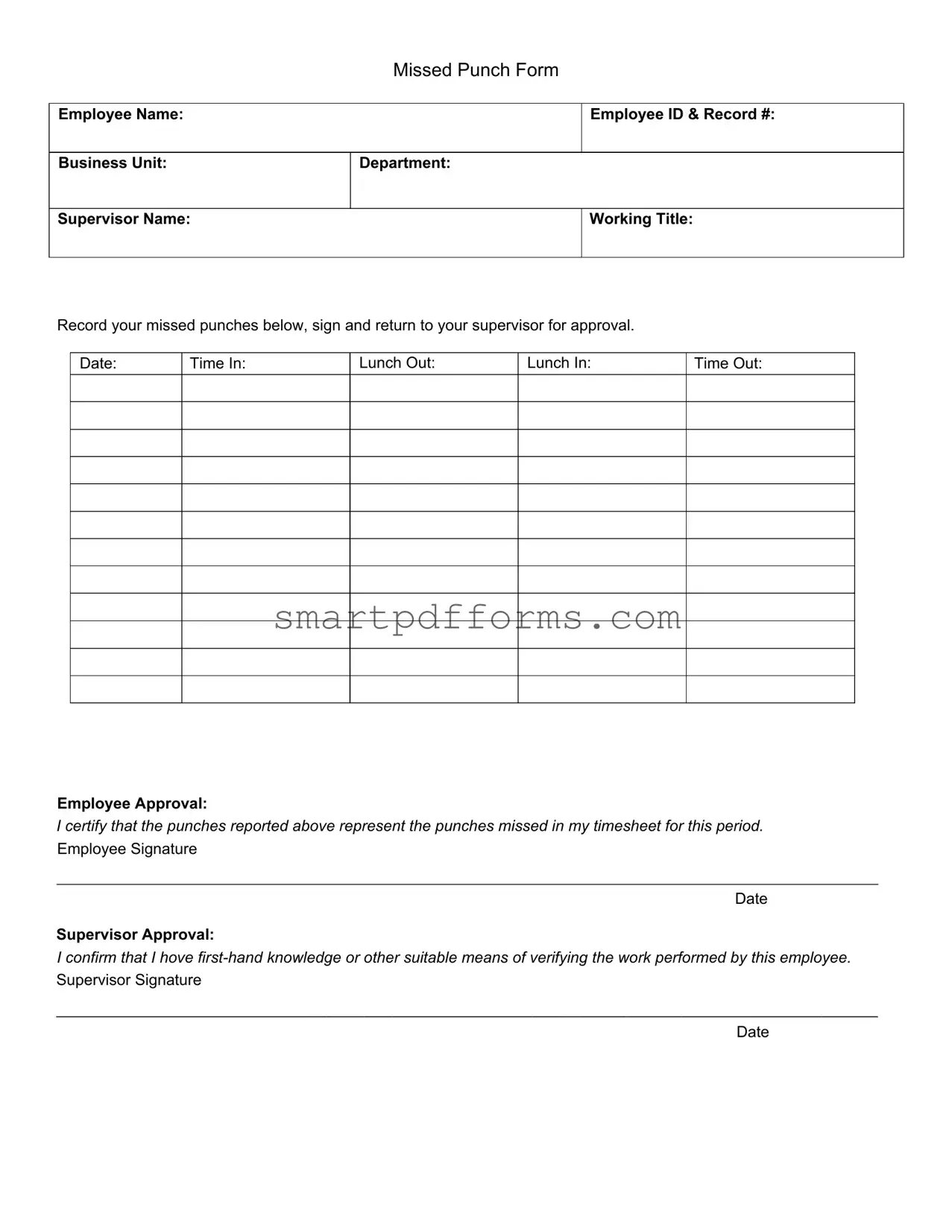In the bustling world of work, accuracy in recording time is essential for both employers and employees. The Employee Missed Punch form plays a pivotal role in maintaining this accuracy by providing a structured method for rectifying instances when an employee forgets to clock in or out. This document requires the employee to note their name, the date, and the reason for the missed punch, detailing whether it was at the beginning of the day, during lunch breaks, or at the end of the day. Employees must check the appropriate type of missed punch or specify another reason if the options provided do not apply. Crucially, obtaining approval from an immediate supervisor is a must before the form can be processed, ensuring that there's oversight and confirmation of the missed event. Moreover, the form's instructions highlight the necessity for an explanation if a missed punch leads to another, ensuring a comprehensive account of time discrepancies. Finalizing the form includes signatures from both the employee and their supervisor, affirming the accuracy of the reported missed punch. This process not only upholds the integrity of timekeeping within the workplace but also underscores the importance of communication and due diligence in addressing attendance issues.

